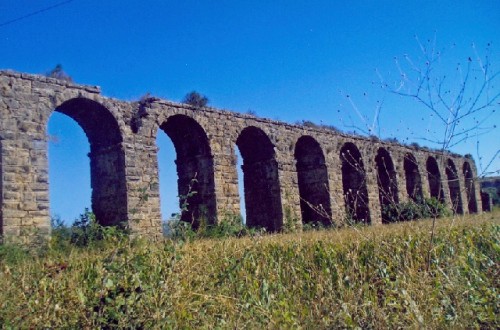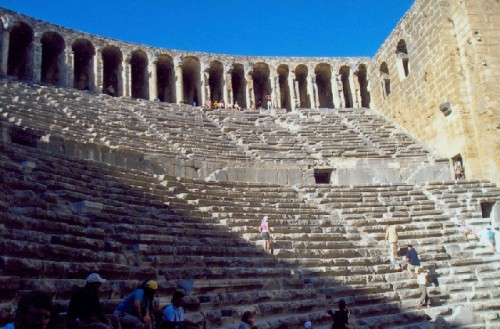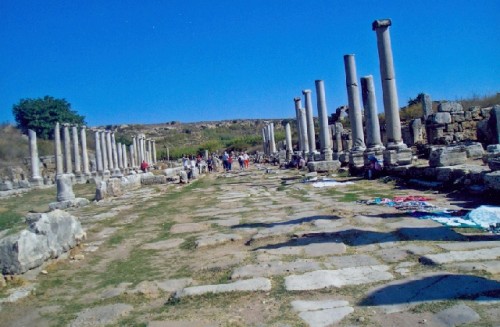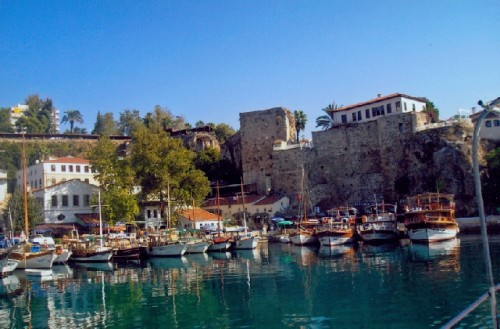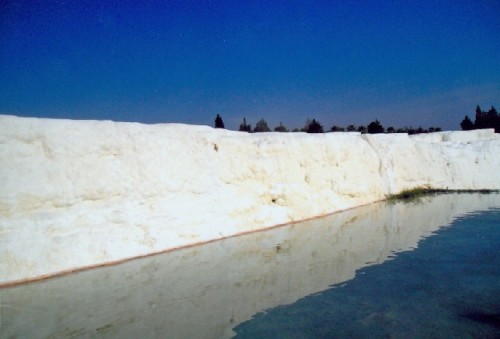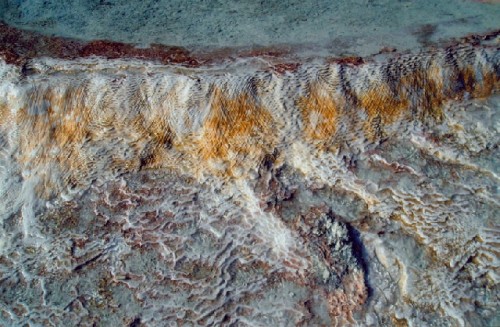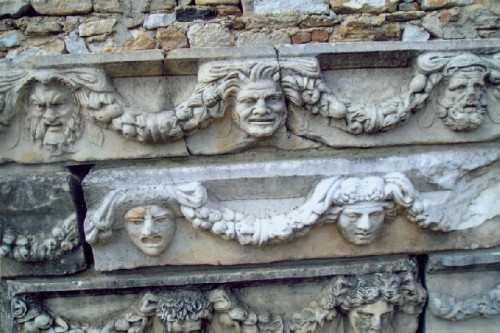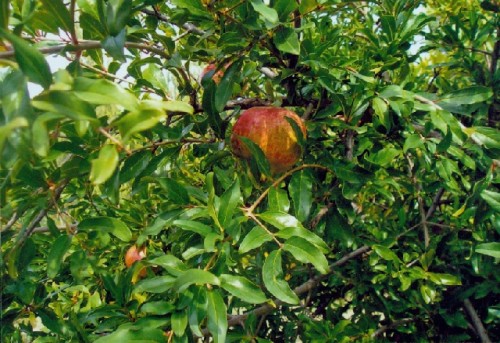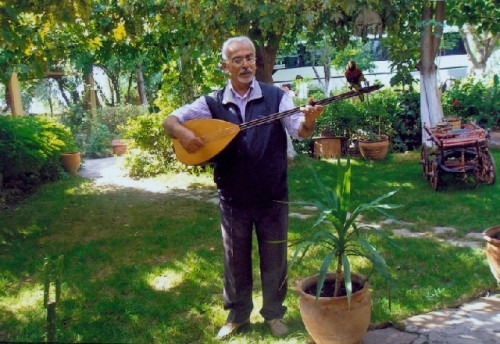Travels in Turkey Part 4
Antalya, Pamukkale, and Aphrodisias
By: Zeren Earls - Apr 17, 2007
Antalya
Antalya is a city of dramatic grandeur nestled at the northern end of a gulf against the high Beydaglari (Lycian mountains). Founded by Attalus II, King of Pergamum, between 160 and 139 BC, Attalya was gifted to Rome by Attalus III, thus becoming a province of Pamphylia. It became part of the Ottoman Empire in the late 14th century. Because of its proximity to both mountain and sea the modern Antalya, with a population of 600,000, is a popular resort town with a wealth of history. Antiquities such as Hadrian's Gate and fragments of old walls that run through the city enhance its charm.
Our first expedition of the region was to Perge, a Roman town 18 km east of Antalya. Village women displaying their crafts lined the road to the stadium. A turquoise crochet hat with colorful beaded braids seemed to be the perfect gift for granddaughter Iris. Scarves with hand-embroidered edgings rose above the usual tourist ware. We walked about the vast stadium, the baths and the agora (marketplace), learning about the customs and history that have been brought to light by excavations.
Returning to the picturesque quay lined with date palms, flowerbeds, benches under shady trees, and luxury apartments with water view dotted by sailboats, we arrived at the Antalya Museum. Items that date from the Neolithic age, starting with sea fossils, can be found here. One walks through history encountering earthenware tombs, Hellenistic jewelry, coins, statues of classical gods and goddesses (Athena, Aphrodite) and the sarcophagus of Alexander the Great, among others. Archeologists, both Turkish and international, who have headed the various digs, are honored with their pictures and biographies. Some items have been smuggled out. After five years of litigation, the Brooklyn and Getty Museums have returned stolen sarcophagi. Negotiations with the Dumberton Oaks Museum are ongoing.
The ethnographic section of the museum features a typical Antalya home with its living, bed- and bathrooms. On display are old carpets, embroidery and jewelry. The museum has a government-run gift shop with high quality goods. The fish-shaped shallow copper pan I purchased here was worth carrying its weight. The rich experience of the morning continued over lunch with a local specialty: grilled sea bream accompanied by olive oil and lemon dressing and sprigs of arugula on the side. Purslane salad and a mixed fruit plate of melons, grapes and plums were the best produce we had sampled so far.
Dösemealti, a region 20 km north of Antalya, is famous for its carpets. We decided to head north to see them. Driving alongside pomegranate and orange trees, we spotted a wholesale carpet shop. The owner was out collecting carpets from the villages. His wife and daughter welcomed us and began unfurling their inventory, as Evin explained the symbolism of their stylized eagle and spider motifs. According to Islamic belief, it was a spider that saved Mohammed's life, which is why it is often used as a holy motif. A ground of deep red characterizes these carpets, with patterns worked in dark blues and tans. The center commonly contains a medallion, often a spider. Since these carpets had not yet found their way to the retail shops, we were able to purchase a few at very reasonable prices.
The following day we walked through the old city to board an excursion boat for a tour of the old harbor. The sea view of modern Antalya rising behind ancient walls was equally compelling. To the west, spectacular mountains with waterfalls rose straight from the sea. We dropped anchor near a small, uninhabited island and swam in the clear emerald waters of the Mediterranean. I was delighted to find that my muscles still remembered how to dive headfirst, a sport I have not tried since my teens. Our captain, also our cook, fixed us a delectable lunch: fresh-caught mackerel, pasta, seasonal salad and watermelon. Afterwards the boat moved to another spot, anchoring near a cave. We dove in again and swam to explore the cave.
Early the next day we left Antalya, heading west toward Denizli. We drove through pine forests, through the Taurus Mountains, to fertile valleys with figs and tobacco plants. Black goat-hair nomadic tents dotted the mountain pastures. Slogans to protect the forests lined the mountainside. We passed marble quarries resulting from geological wonders when central and western Anatolia used to be under water. Calcium deposits at the bottom of warm waters have hardened into marble with the drying of the oceans, their color and vein structure determined by fossils and mineral elements.
Melon stands by the road and fields of tobacco stalks were signposts of the fertile land. Tobacco leaves are handpicked early in the morning and left to dry, strung on strings tied to bamboo poles. Another common site was the plant of the chickpea, a popular snack in Turkey, once harvested and roasted. At the road sign to Pamukkale we turned north.
Pamukkale
Pamukkale (the Cotton Fortress) founded in the 2nd century BC, served as the spa city Hierapolis since Roman times. The wondrous lime and other mineral deposits, solidified upon contact with the air, have formed white travertine terraces as the rivulets of hot water that bubble up along the edge of the mountain spill over them. The curative power of the town's waters, combined with its well-preserved ruins, attracts many tourists. The Ministry of Tourism no longer allows any hotels built near the travertine. The hotel with a terrace overlooking the crystalline landscape, where I stayed in 1964, is now gone.
The grounds of Hierapolis included the necropolis, which housed tombs of families; the lighter-colored sarcophagi (meaning flesh-consuming stone due to their chemistry) indicated recent excavations. Next were the baths, later used as a Christian basilica and the main street built with huge stones. Shops lined the agora with lion gates at each end. The archeology museum displayed treasures from the prehistoric and Roman digs: pottery, coins, gold jewelry and many statues. Visiting the Roman theater ended the tour.
Delighted with the opportunity to experience the shallow waters of the travertine terraces, pants rolled up and shoes in hand, we walked about admiring the rippled patterns on the slippery stones. Following a refreshment of freshly squeezed pomegranate juice, we headed to our hotel to enjoy its jacuzzi and a well-deserved swim in the pool. The attraction of the dinner was watching village women make gözleme by rolling out thin sheets of dough that they layered with chopped spinach or meat with herbs and cooked on a sheet of iron over a wood fire.
In the morning we continued our itinerary through the Aegean region toward Aydin. The landscape changed into cotton fields dotted with tents of migrant workers, who had come from other parts of Anatolia to pick cotton before the rains started. Cotton is still picked by hand on small farms. Women in colorful headscarves and baggy pants bent over the fields composed a beautiful rural tableau, despite their backbreaking work. Ads for thermal baths, hotels, marble and travertine highlighted the contrast in wealth.
Crossing a tributary of the Menderes (Meander) River, we turned off onto a village road toward the ancient city Aphrodisias, driving by many reeds, which signaled the moisture of the area. The early inhabitants of Aphrodisias lived in caves and formed maternal societies. Having babies was important to assure the survival of the tribe. Idols were women from very early on until about 1000 BC, when male power gained importance in farming and wars. Aphrodite (Venus), the city's patron goddess, symbolized fertility in the Greek and Roman periods.
A village was built on the ruins of the ancient city, now under water. In order to excavate, people had been relocated to a new village, and the water pumped to dig out the ancient city. Temples, a house around a courtyard, a theater, a stadium, a council chamber and separate baths for cold, tepid and hot water have been revealed at Aphrodisias. The museum has numerous attractive statues, including those of Apollo and Aphrodite, its many levels representing the entire universe from the heavens to the underworld.
The village square has a giant sycamore tree, an Ottoman fountain and marble antiquities. Ionian column heads, benches with carved dolphin arms and sarcophagi with masks in high relief are the backdrop for the coffee shop. People carry on with their daily lives, respecting their setting. We enjoyed lunch outdoors overlooking lush grapes. Upon request I walked away with one of the garlands of dry red peppers that adorned the restaurant's rafters. Cotton tablecloths hand-woven by the villagers were beautiful in their simplicity.
Back on the main road we passed by fig-processing factories near Nazilli and newly planted strawberries in Sultanhisar, then switched to a scenic toll road with mountains on one side and green fields on the other. We speeded by poplars, willows, fruit orchards and olive trees. In the fields white bags full of cotton waited to be transported to factories. Fields of cabbage and corn gave way to pottery shops and houses with red-tiled roofs near Selçuk. Coming to Kusadasi, our final destination of the day, the road rounded a turn and wound down the cliffs with a splendid view of the Aegean.

